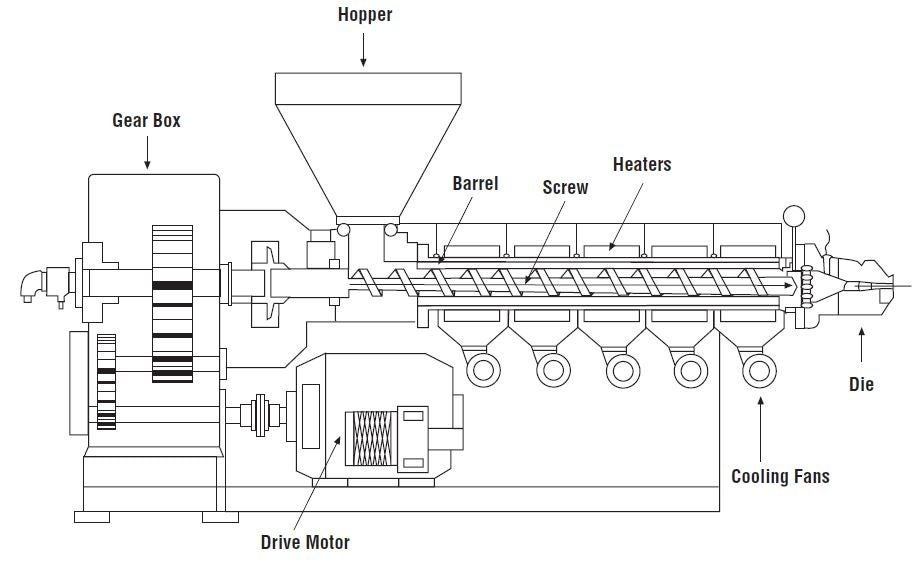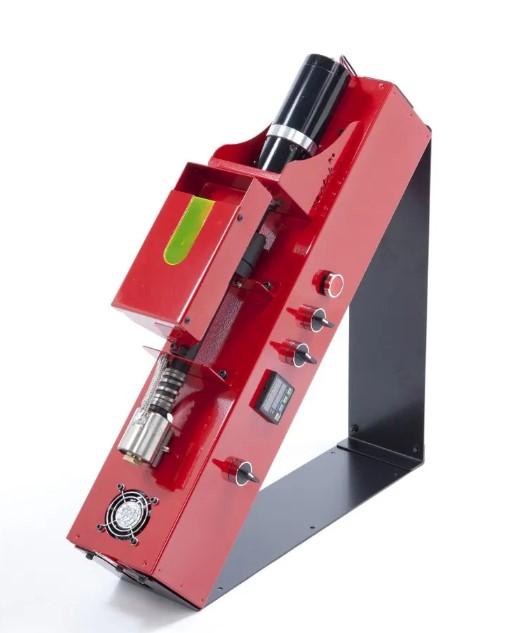An extruder to convert waste PET and PLA into 3D printer filament
Emily E. Kuehl, Luke Favillo, Nate Buslach, Dr. Amy Moll

Introduction
Single use plastics, and in general plastic waste, are increasingly problematic worldwide. The larger scale systems for recycling and reuse are unable to keep up with the waste generated. At the same time that plastic waste is growing, the “Maker” movement and use of 3D printers is growing. On the Boise State campus, Albertson’s library and the College of Engineering’s Innovation Studio house more than a dozen 3D printers. Is it possible to use plastic waste generated on the Boise State campus to fabricate 3D printer filament and hence have a local closed loop recycling process? The key to creating this recycling system is an equipment set that can convert plastic waste into useable 3D printer filament.

Background Data
1. Plastic waste is a problem worldwide
2. Plastic was previously sent to China for recycling, but China has limited the amount of waste it imports.
3. PET and PLA are the focus.
4. PLA is Polylactic acid [3]
- an organic based plastic made with corn starch and sugar cane.
- melting point is between 150 – 160 °C
- easy to process including extrusion
- a common material for 3D printing
5. PET is Polyethylene terephthalate [3]
- clear, strong and lightweight
- typically used for single use bottles
- materials properties including a higher melting point make it more difficult to extrude.
Technical Approach and Results
Technical Approach
Extruders were characterized by:
- Cost of the extruder, alone and as a set (cooling system and spool winder included)
- The plastics that can be extruded
- The diameter of the filament it can create
- The maximum temperature
- The extrusion rate
Two possible extruders were identified that fit the majority of the design criteria.
Results
The Filabot EX2 Extruder [2]
Pros:
- Has an option to purchase an extruding set
- Large range of plastic types
- Less expensive than other models
Cons:
- Cannot extrude PET
Objectives

Demonstrate a local solution to recycling plastic waste.
Reduce the amount of plastic waste generated at Boise State that ends up in landfill.
Create 3D printer filament from plastic waste
Determine the equipment to be purchased to:
- Shred waste PLA and PET
- Extrude waste PLA and PET into 3D printer filament.
Pursue a funding source for the purchase and installation of the extruder.
References
[1.] “Noztek Pro HT Desktop Extruder,” Noztek Extrusion Systems. [Online]. Available: https://www.noztek.com/product/noztek-pro-high-temperature-extruder/. [Accessed: 03-Feb-2020].
[2.] “Filabot EX2 Extruder Setup,” Filabot. [Online]. Available: https://www.filabot.com/collections/ex2-extruder/products/ex2-bundle. [Accessed: 03-Feb-2020].
[3.] J. Steiha. Polymer Processing Expert.
Figures
Figure 1.: Giles, Harold. “Azom.” Azom, 2017. [accessed 22-Mar-2020]
Figure 2.: “Noztek Pro HT Desktop Extruder,” Noztek Extrusion Systems. [Online]. Available: Noztek Pro HT. [Accessed: 07-Feb-2020].
Additional Information
For questions or comments about this research, contact Emily Kuehl at emilykuehl@u.boisestate.edu.